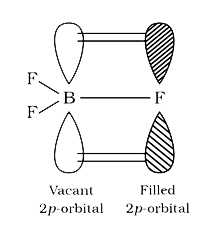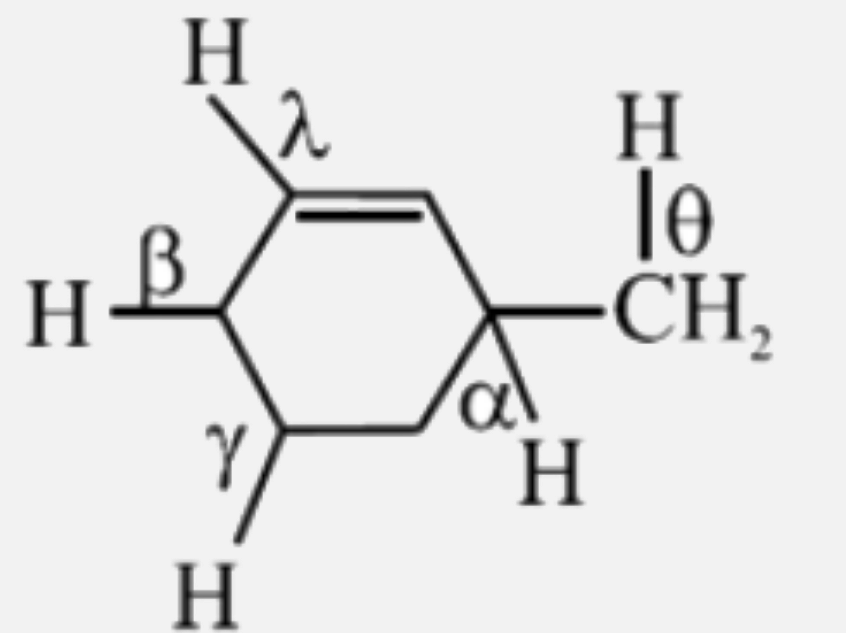The bond dissociation energy of B-F in BF3 is 646 kJ mol−1 whereas that of C-F in CF4 is 515 kJ mol−1. The correct reason for higher B-F bond dissociation energy as compared to that of C-F bond is
stronger σ bond between B and F in BF3 as compared to that between C and F in CF4
significant pπ−pπ interaction between B and F in BF3 whereas there is no possibility of such interaction between C and F in CF4
lower degree of π−π interaction between B and F in BF3 than that between C and F in CF4
smaller size of B-atom as compared to that of C-atom.
The correct Answer is:B
NOTE: The delocalized pπ−pπ bonding between filled p-orbital of F and vacant p-orbital of leads to shortening of B−F bond length which results in higher bond dissociation energy of the B−F bond.


Topper's Solved these Questions
- CHEMICAL BONDING-I & IIBOOK - VMC MODULES ENGLISHCHAPTER - CHEMICAL BONDING-I & IIEXERCISE - JEE Advanced (Archive)
98 Videos
- CHEMICAL BONDING-I & IIBOOK - VMC MODULES ENGLISHCHAPTER - CHEMICAL BONDING-I & IIEXERCISE - JEE Main (Numerical Value Questions)
15 Videos
- CHEMICAL BONDING & MOLECULAR STRUCTURE BOOK - VMC MODULES ENGLISHCHAPTER - CHEMICAL BONDING & MOLECULAR STRUCTURE EXERCISE - IN-CHAPTER EXERCISE-L
9 Videos
- CHEMICAL EQUILIBRIUMBOOK - VMC MODULES ENGLISHCHAPTER - CHEMICAL EQUILIBRIUMEXERCISE - IN-CHAPTER EXERCISE - G
10 Videos
Similar Questions
Knowledge Check
The bond dissociation energy of B−F in BF3 is 646kJmol−1 whereas that of C−F in CF4 is 515kJmol−1. The correct reason for higher B−F bond dissociation energy as compared to that of C−F in CF4 is
Astronger σ bond between B and F in BF3 as compared to that between C and F in CF4Bsignificant pπ−pπ interaction between B and F in BF3 whereas there is no possibility of such interaction between C and F in CF4Clower degree of pπ−pπ interaction between B and F in BF3 than that between C and F in CF4Dsmaller size of B - atoms as compared to that of C-atomThe bond dissociation energy of the C−H bond for the compound.

decreases in the order.AP>Q>R>SBS>R>Q>PCS>P>Q>RDQ>P>S>R
The dissociation energy of CH4(g) is 360 kcal mol−1 and that of C2H6(g)is620kcalmol−1. The C-C bond energy
View SolutionThe correct order of bond dissociation energies of various C−H bonds present in the compound is

View SolutionThe enthalpy of formation of UF(g) is 22kcalmol−1 and that of U(g) is 128kcalmol−1.
The bond energy of the F−F bond is 37kcalmol−1 . The bond dissociation energy of UF(g) is (are):
View SolutionAssertion : Bond dissociation energy of B−F bond in BF3 molecule is lower than C−F bond in CF4 molecule.
Reason : Atomic size of B-atom is larger than that of C-atom.
View SolutionAssertion : Bond dissociation energy of B−F bond in BF3 molecule is lower than C−F bond in CF4 molecule.
Reason : Atomic size of B-atom is larger than that of C-atom.
View SolutionThe average energy required to break a P-P bond in P4(s) into gaseous atoms is 53.2kcalmol−1. The bond dissociation energy of H2(g) is 104.2kcalmol−1,ΔH0f of PH3(g) from P4(s) is 5.5kcalmol−1. The P-H bond energy in kcal mol−1 is [ Neglect presence of Van der Waals force in P4(s)]
View Solution
